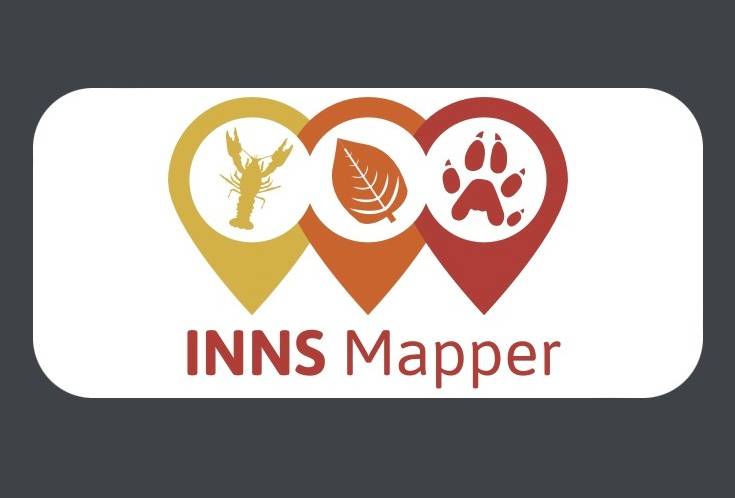New invasive species mapping tool launched in Great Britain

8/9/2023
A new multi-platform invasive non-native species (INNS) mapping tool has launched in England, Wales and Scotland.
The INNS Mapper app and website, which will also be known as Mapiwr INNS in Wales with Welsh language options, will enable people to report sightings, surveys and the management of INNS.
The project has been funded by several organisations and designed and developed by the INNS Mapper Steering Group which includes Yorkshire Water, Yorkshire Wildlife Trust (YWT) and the Wales Resilient Ecological Network (WaREN).
Users of INNS Mapper will be able to report sightings of invasive non-native species, as well as add photos of species they spot for them to be verified. The app and website will also allow for reports of INNS surveys and management of INNS, acting as a platform to heighten coordination of INNS management across catchments and regions.
It is hoped increased reporting will help to build a picture of how significant a problem INNS are across Great Britain and inform how they are monitored and managed in the future.
INNS are not native to Britain and have been accidentally or purposefully introduced by people. Although there are many non-native species of plants and animals that have been introduced to Britain, around 2,000, approximately 10-15% are considered invasive due to their negative impacts, either on the local environment, the economy or our health and the way we live. The problems caused by INNS have increased dramatically in recent years due to more travel and trade between nations, which has seen the rate of introduction of non-native species rise.
The negative impacts of INNS are far reaching for the environment, economy and socially. They can cause irreparable harm and it is vital they are prevented from spreading, carefully managed and handled by those who encounter them.
INNS can threaten the survival of native wildlife, spread diseases and damage delicate ecosystems and are one of the biggest drivers of biodiversity loss around the world, alongside other well-known issues such as climate change, habitat loss and fragmentation.
Dr Steph Bradbeer, invasive species and biosecurity ecologist at Yorkshire Water, said: “INNS Mapper will provide an easy way for people to report sightings, surveys and management of invasive non-native species in England, Wales and Scotland. The ability to record management alongside sightings and surveys will allow for the dissemination and coordination of INNS management across catchments and regions. In addition to their environmental impacts, INNS cause a significant economic impact, estimated to be £4 billion per year, highlighting the importance of their management and minimising their impact.
“The presence of INNS around Britain can also impact people socially, as their presence limits activities due to the dangers they pose, particularly in bodies of water. Floating pennywort is one example. It was introduced to the country as an ornamental pond plant which has now become established in the wild. It can grow up to 20cm per day creating dense carpets on water surfaces, making activities such as fishing, sailing, and enjoying the water virtually impossible. Additionally, floating pennywort can exacerbate flooding by clogging watercourses so the impact can be extreme. Understanding where INNS, such a floating pennywort, are spotted and where management is being undertaken is vital for effective INNS management.”
Alex Green, INNS and biosecurity officer at Yorkshire Wildlife Trust, added: “Yorkshire Wildlife Trust has tackled the spread of invasive non-native species across Yorkshire for a number of years, targeting Japanese knotweed and giant hogweed across a number of areas, as well as supporting Local Action Groups and stakeholders with plant identify training and awareness of biosecurity.
“Invasive non-native species often outcompete our native wildlife, reducing biodiversity, which has a knock-on impact to the wider ecosystem. Himalayan balsam, for example, grows rapidly and forms dense monocultures, outcompeting native vegetation and reducing the variety of available habitat and food sources for smaller wildlife. When it dies back over winter, it leaves areas of riverbank prone to erosion which affects water quality.
“We are extremely optimistic and delighted about the launch of this app, which will get people across the country involved in spotting and recording any invasive non-native species they find, to help build a picture of distribution. This will help to join up and coordinate efforts across larger areas more effectively.”
Tomos Jones, Wales Resilient Ecological Network (WaREN) project manager at North Wales Wildlife trust said: “This is an exciting opportunity to gain a better understanding of where invasive non-native species are found across Great Britain. The ability to report management of INNS through INNS Mapper is particularly important in achieving a strategic approach and joining-up efforts between a range of stakeholders, including volunteer Local Action Groups (LAGs).”
INNS Mapper/Mapiwr INNS is available on iOS and Android platforms from today.
Natural Apptitude is the developer of the app and website with National Biodiversity Network and the Great Britain Non-Native Species Secretariat also being in the INNS Mapper Steering Group. Funding has been provided by those in the Steering Group as well as the Aquatic Biosecurity Partnership, Welsh Water, CaSTCo (Catchment Systems Thinking Cooperative), Northumbrian Water, South East Water and Southern Water.
